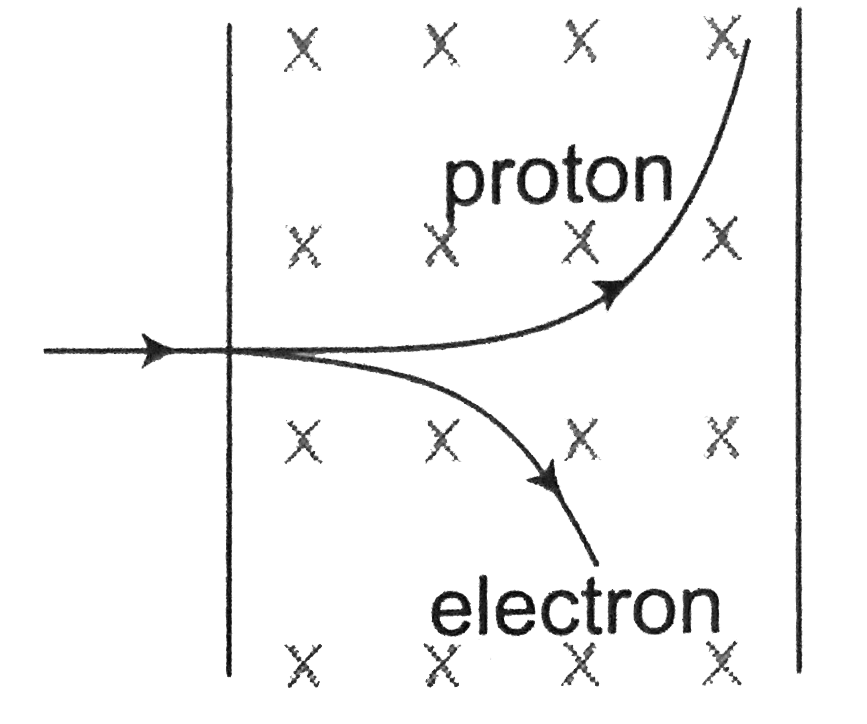A beam consisting of protons and electrons moving at the same speed goes through a thin region in which there is a magnetic field perpendicular to the beam. Protons and the electrons
will go undeviated
deviated by same angle and won't separate
deviated by different angles and separate
deviated by same angle but will separate
The correct Answer is:C
Topper's Solved these Questions
Similar Questions
A beam consisting of protons and electrons moving at the same speed goes through athin region in which there is a magnetic field perpendicular to the beam. Protons and the electrons
View SolutionAn electron and a proton are moving with the same kinetic energy along the same direction, When they pass through a uniform magnetic field perpendicular to the direction of their motion, they describe circular path of the same radius. Is this statement true or false?
View Solution
Knowledge Check
A beam consisting of protons and electrons moving at the same speed goes through a thin region in which there is a magnetic field perpendicular to the beam. The protons and the electrons
Awill go undeviatedBwill be deviated by the same angle and will not separateCwill be deviated by different angles and hence separateDwill be deviated by the same angle but will separate.There is a beam of electrons and protons in which both the particles are moving with the same velocity, entering a thin region, where a uniform magnetic field is applied perpendicular to the motion of beam. The protons and the electrons
Awill be deviated in the same directionBwill be deviated in opposite directions with a different angle of deviationCwill be deviated in an opposite direction with a same angle of deviationDwill not deviateA narrow beam of protons and deutrons, each having the same momentum, enters a region of uniform magnetic field directed perpendicular to their direction of momentum. The ratio of the radii of the circular paths described by them is
A1:2B1:1C2:1D1:3
An electron and a proton are moving with the same kinetic energy along the same direction . When they pass through a uniform magnetic field perpendicular to the direction of their motion , they describe circular paths of the same radius.
View SolutionIf a beam of electrons travels in a straight line in a certain region. Can we say there is no magnetic field?
View SolutionA beam of proton passes undeflected with a horizontal velocity v, through a region of electric and magnetic fields, mutually perpendicular to each other and perpendicular to the direction of the beam. If the magnitudes of the electric and magnetic fields are 100kV/m, 50mT respectively, calculate the velocity of the beam v.
View SolutionAn electron and a proton have equal kinetic energies. They enter in a magnetic field perpendicular to B, then:
View SolutionAn electron and a proton have equal kinetic energies. They enter in a magnetic field perpendicular to B, then:
View Solution

